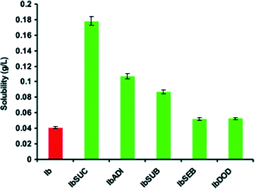
 Longifolene
Longifolene is the common (or trivial) chemical name of a naturally occurring, oily liquid
hydrocarbon found primarily in the high-boiling fraction of certain pine
resins. The name is derived from that of a
pine species from which the compound was isolated,
[1] Pinus longifolia (obsolete name for
Pinus roxburghii Sarg.)
[2]
Chemically, longifolene is a tricyclic
sesquiterpene. This molecule is
chiral, and the
enantiomer commonly found in pines and other higher plants exhibits a positive
optical rotation of +42.73°. The other enantiomer (optical rotation −42.73°) is found in small amounts in certain
fungi and
liverworts.
Longifolene is used in organic synthesis for the preparation of dilongifolylborane,
[3] a chiral
hydroborating agent.
Longifolene is also one of two most abundant
aroma constituents of
lapsang souchong tea, because the tea is smoked over pine Due to the compact tricyclic structure and lack of
functional groups, Longifolene is an attractive target for research groups highlighting new synthetic methodologies. Notable syntheses are by
Corey,
[5][6] McMurray,
[7] Johnson,
[8] Oppolzer,
[9] and Schultz.
[10]

Longifolene total synthesis by Corey
| Author |
Elias J. Corey |
|---|
| Publication year |
1961 |
| Synthesis type |
Total synthesis |
| Number of steps |
14 (linear) |
| References |
|
............
Total synthesis of Longifolene:
| Reference: | Corey, E. J.; Ohno, M.; Mitra, R. B.; Vatakencherry, P. A. J. Am. Chem. Soc. 1964, 86, 478. DOI |
| Keywords: | Ketone → Ketal • CompE+-Ketone/Ketone+glycol • O-H → O-SO2R
• Ketone → Ketal(thio) • Ketone → Alkyl-OH • Alkyl-OH → Ketone •
Li-Me+Ketone • Ketone+Li-Alkyl • Dehydration → Ene • Wittig-alkyl+Ketone
• Alkene → Diol-1,2 • CompNu-Alcohol/Alcohol+RSO2Cl • Pinacol • ConjAdd Enolate • Ketone enolate+Enone • Hydrogenolysis C-S • Ketone → CH2 • |
| Reagents: | Wieland-Miescher • Glycol • TsOH • PPh3=CH-Me • OsO4 • TsCl, Py • LiClO4 • Carbonate, calcium • HCl, H2O • NEt3 • NaCPh3 • MeI • Thiol, (CH2)2-SH • BF3·OEt2 • AlH4-Li+ • Hydrazine • CrO3 • MeLi • SOCl2 • |
1,4-Methanoazulene,
Junipen, (+)-Longifolene, 475-20-7,
3,3,7-trimethyl-8-methylenetricyclo[5.4.0.02,9]undecane, Kuromatsuen,
Kuromatsuene
Molecular Formula: C
15H
24 Molecular Weight: 204.35106
....................
The borane derivative
dilongifolylborane is used in
organic synthesis as a chiral
hydroborating agent.
[12]
- Naffa, P.; Ourisson, G. Bulletin de la Société chimique de France, 1954, 1410.
- Simonsen, J. L. J. Chem. Soc. 1920, 117, 570.
- Jadhav, P. K.; Brown, H. C. J. Org. Chem. 1981, 46, 2988.
- Shan-Shan
Yao; Wen-Fei Guo; YI Lu; Yuan-Xun Jiang, "Flavor Characteristics of
Lapsang Souchong and Smoked Lapsang Souchong,a Special Chinese Black Tea
with Pine Smoking Process", Journal of Agricultural and Food Chemistry, Vol. 53, No.22, (2005)
- Corey, E. J. et al. J. Am. Chem. Soc. 1961, 83, 1251.
- Corey, E. J. et al. J. Am. Chem. Soc. 1964, 86, 478.
- McMurray, J. E.; Isser, S. J. J. Am. Chem. Soc. 1972, 94, 7132.
- Volkermann, R. A.; Andrews, G. C.; Johnson, W. S. J. Am. Chem. Soc. 1975, 97, 4777-4779.
- Oppolzer, W.; Godel, T. J. Am. Chem. Soc. 1978, 100, 2583.
- Schultz, A. G. et al. J. Org. Chem. 1985, 50, 915.
- Ho, Gregory J. Org. Chem. 2005, 70, 5139 -5143.
- Dev, Sukh (1981). "Aspects of longifolene chemistry. An example of another facet of natural products chemistry". Accounts of Chemical Research 14 (3): 82–88. doi:10.1021/ar00063a004.













 BRAZIL WORLDCUP WEEK 2014
BRAZIL WORLDCUP WEEK 2014



 A route to oxygenated pyrano[3,2-a]- and
pyrano[2,3-a]carbazole alkaloids
A route to oxygenated pyrano[3,2-a]- and
pyrano[2,3-a]carbazole alkaloids A mild and catalytic methylation of amines with formic acid
A mild and catalytic methylation of amines with formic acid